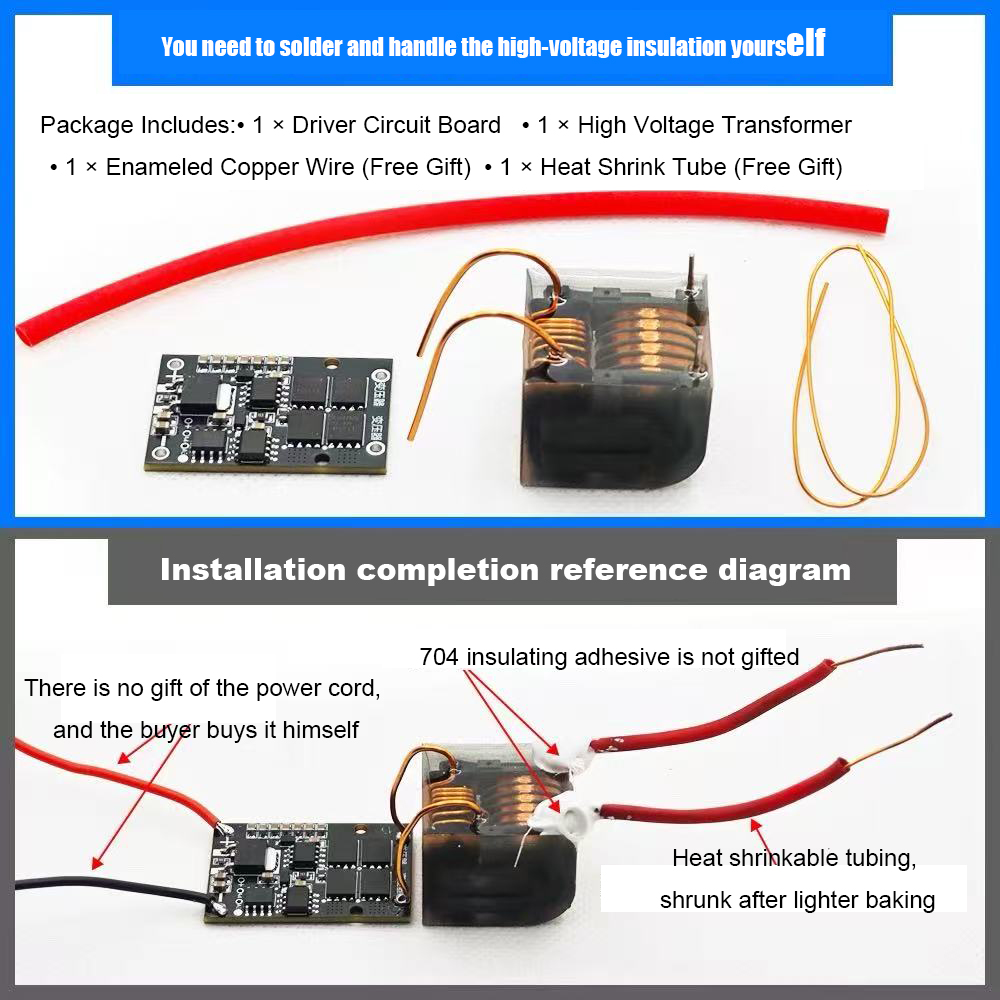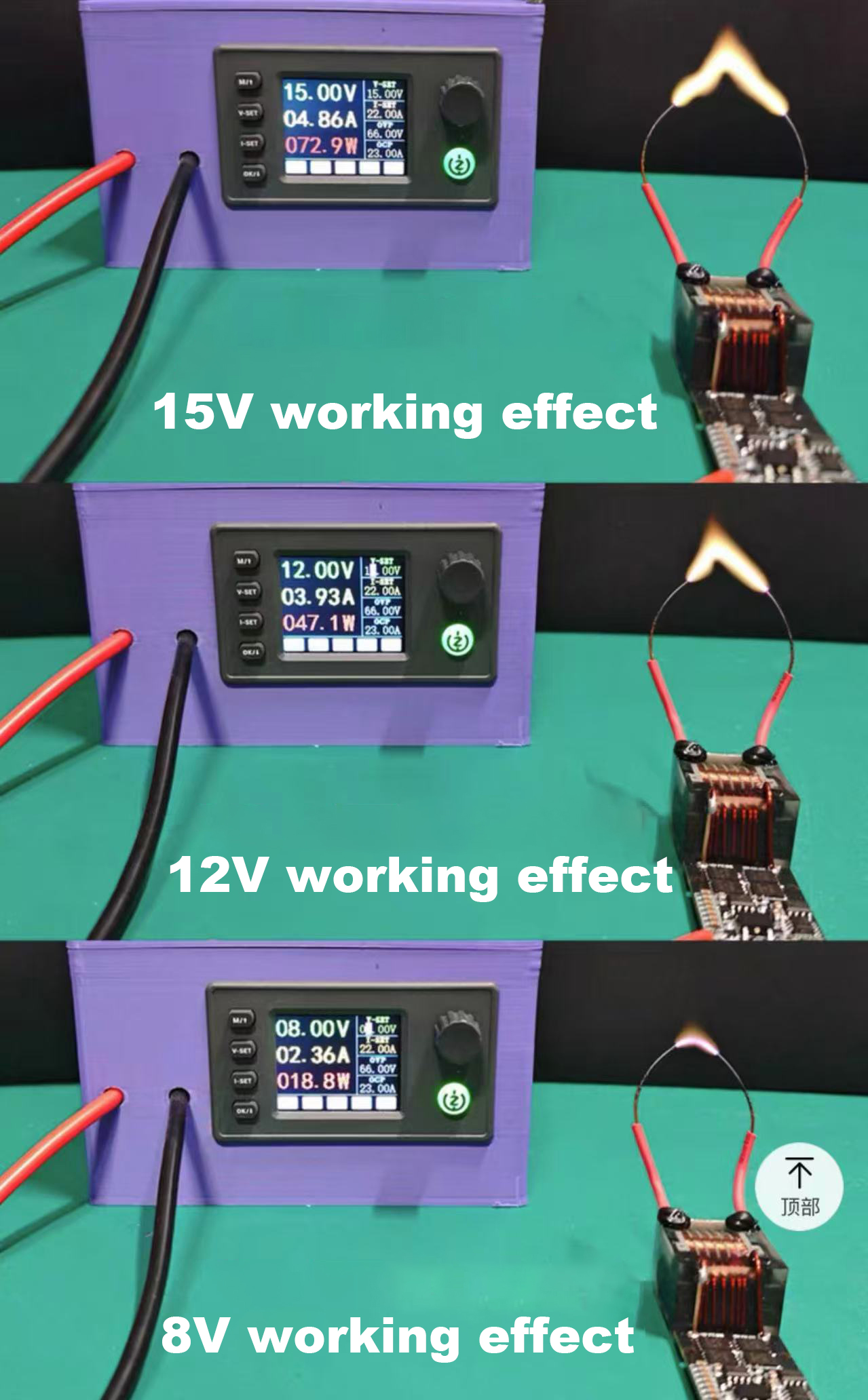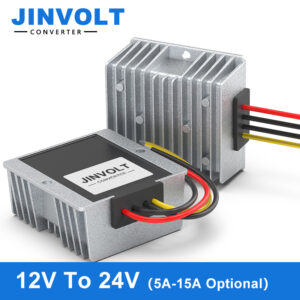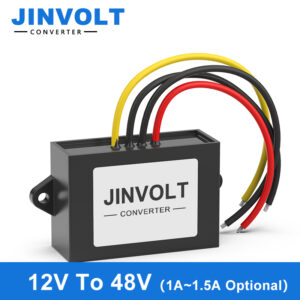Product Description:
Power Supply Voltage: 6–15V (Recommended: 3S battery or 12V switching power supply)
Input Current: Max 5A
Maximum Power: 70W (when powered at 15V; approx. 45W at 12V input)
Output Voltage: 10kV–25kV
PCB Size: 35mm × 23mm
Transformer Size: 27mm × 24mm × Height 21mm (+3mm high-voltage insulation on output end)
Overall Assembled Dimensions: Length 61mm × Width 24mm × Thickness 24mm
Protection Mechanism: MOSFET Overheat Auto-Protection
(Effectively prevents damage caused by high temperatures during extended use.)
Additional Notes:
This ignition module adopts dynamic frequency sweeping for automatic arc initiation—no manual triggering required. When paired with the included transformer and powered by 12V, it supports natural cooling for long-term operation.
The heating rate of the MOSFETs depends on the arc gap; a smaller gap results in faster heating.
The high-voltage output wires should not be excessively long. If extension is needed, extend the power supply wires or the transformer secondary instead.
Test Data:
Under extreme test conditions with a constant 12V power supply, the module sustained continuous ignition for 20 minutes in a 10°C environment.
The MOSFET temperature reached approximately 90°C without triggering overheat protection.
The protection is triggered around 100°C.
Testing was done using a precision digital power supply with an 18mm arc gap and the driver board suspended in air.
If using a regular 12V switching power supply, early triggering of overheat protection may occur due to:
•Output voltage exceeding 12V (e.g., 12.2V)
•Voltage instability
•Higher ambient temperatures
In such cases, the protection may trigger after ~2 minutes on first use from a cold start.
Attaching small heatsinks to the 4 MOSFETs on the driver board is a recommended solution.
Compared with similar products, this module’s thermal performance is among the best.
Important Notice:
Due to high power output, the transformer’s secondary high-voltage output terminals must be well insulated to prevent arcing directly at the output pins, which can cause irreversible damage (e.g., burning or breaking the pins).
This is not considered a quality defect, but rather user mishandling.
Before proper insulation is applied, only perform momentary power-on testing.








Reviews
There are no reviews yet.